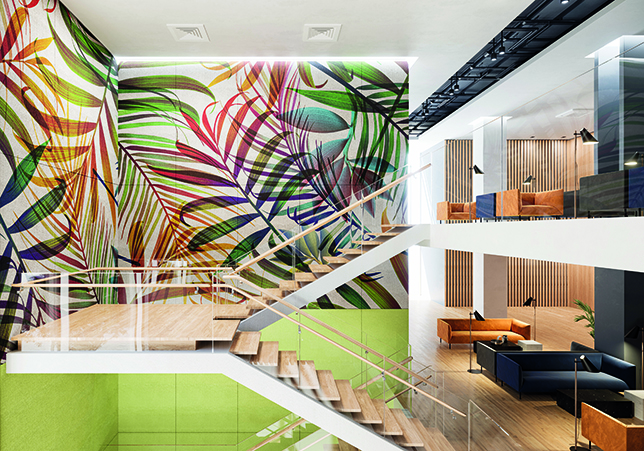Armstrong Introduces Direct-Attach Ceiling, Wall Panels
Armstrong Ceiling & Wall Solutions recently introduced its Tectum Create! Direct-Attach line of ceiling and wall panels. The textured panels come in a variety of standard and custom designs to add flair and aesthetics to any space. The 1”-thick panels also provide acoustic benefits, featuring a Noise Reduction Coefficient (NRC) of up to 0.85 depending on the method of installation. According to a news release, the panels could serve as a retrofit solution for noise reduction.

Photo Courtesy of Armstrong World Industries
The panels come in four standard designs: Textured Hex, Exposed Brick, Rustic Plank and Steady Wave. Armstrong can also create custom designs to match any client’s aesthetic. The repeated panel patterns allow the panels to span as far as necessary both horizontally and vertically along a surface.
The panels are available in two sizes: 23 ¾" x 48" and 47 ¾" x 96" with long and short beveled edges. As the name suggests, they can attach directly to a variety of interior wall and ceiling surfaces. The panels are made from cementitious wood fiber and are part of the organization’s Sustain portfolio. They’re also part of the CleanAssure portfolio of easily disinfectable, cleanable products to help make spaces safe and clean.
About the Author
Matt Jones is senior editor of Spaces4Learning. He can be reached at [email protected].